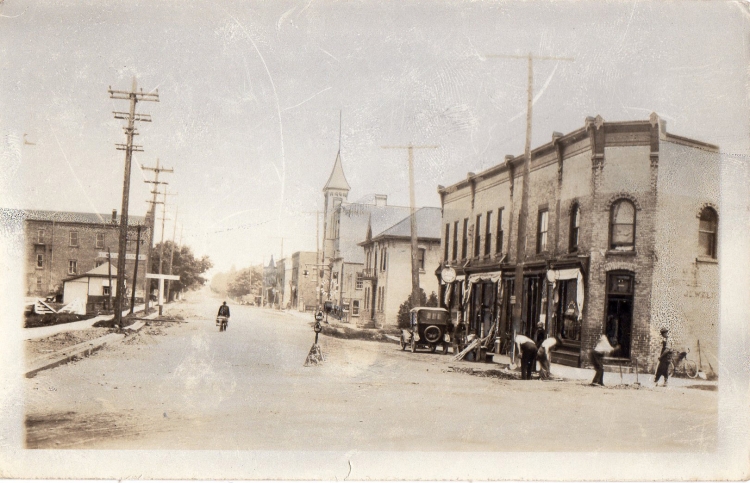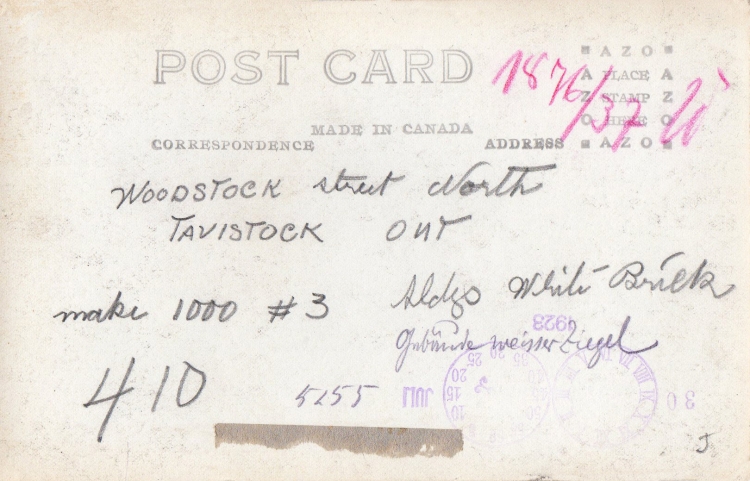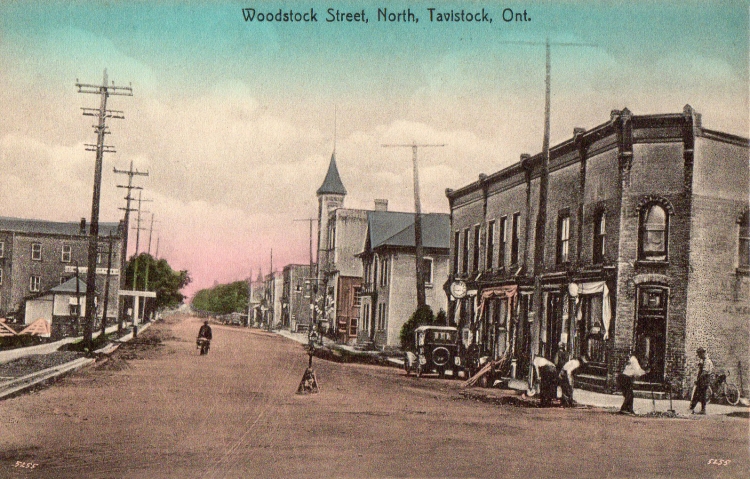These two postcards hold a special place in our collection. The postcards are part of a set published by J. E. Evans, Manufacturer and Dealer in Pictorial Post Cards, Port Rowan, Ontario, and these two demonstrate the process of how a photograph is converted into a postcard.The postcards must be dated to after World War I because one of the postcards in the set by Evans is of the Public Library and beside the Library sits a mortar cannon, a relic of the First World War.
The Historical Society in Port Rowan has little information on the J. E. Evans company but there is an article on the internet about Evans originally published in an Orillia newspaper. The article explains the process by which Evans the publisher would take a photograph and make a postcard from it.
If a client wanted a certain postcard to be made, J. E. Evans, the publisher, would ask the client to submit to him a black and white photo of the scene. The client would be asked also to specify the colours of the original scene. (If no colours were specified, Evans' printer would just put in what colours he thought were apt). Lines would be placed on the original photo to indicate where it should be cropped to meet the standard postcard format size. On the back of the photo would be written some specific instructions to the printer such as what quantity to make, what title to put on the front, and what number to write on it if part of a series. When the printer received the photo and instructions from Evans, a time stamp would be applied to the back of the photo showing the date and hour the order was received. The finished product would be hand-coloured by the artist.
J. E. Evans was one of the few Canadian postcard publishers to deal with a printer in Germany after WW1. Before the war, the finest quality postcards came from Germany and Great Britain. German production fell off during the conflict but after the war Germany still had some of the best printing equipment in the world and the devalued mark provided good value for a quality finished product.
This RPPC (Real Photo Postcard) photograph which was the template for the final coloured postcard was found at an antique show in a bin of old postcards for sale. It’s a view of Woodstock Street looking north from the centre of town and there are construction workers over to the side. On the reverse of the photo are found instructions to the printer: the title “Woodstock Street North, Tavistock, Ont”; details of colour--“buildings white brick”-- written in English and translated into German; the time the order was received (July 30 1923); and the number to be produced—1000. The final product, the postcard, is hand-coloured.
A search of the Tavistock Gazette files revealed that the curbs in the main intersection in Tavistock were indeed being installed in June 1923.
The set of postcards printed in 1923 and published by J. E. Evans of Port Rowan Ontario includes a four postcard panoramic view of the town taken from the water tower, a two postcard view of the centre of down from Hope Street East, a two postcard view of Woodstock Street South looking to the centre of town, and single views of the Carnegie Library (with mortar cannon to the right of the picture) and of workers building the curbs in the centre of town (this postcard).


